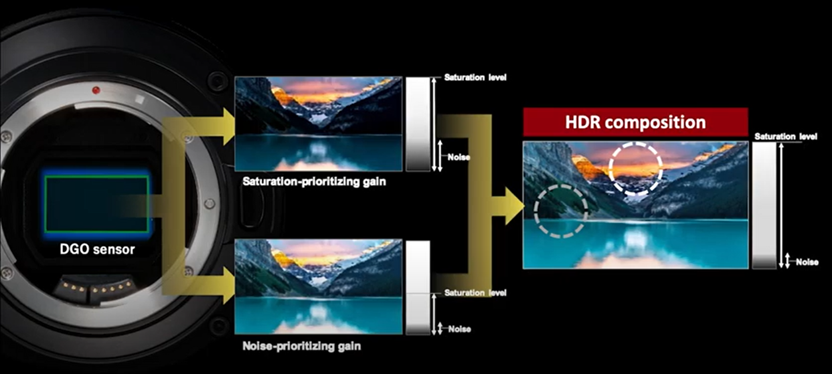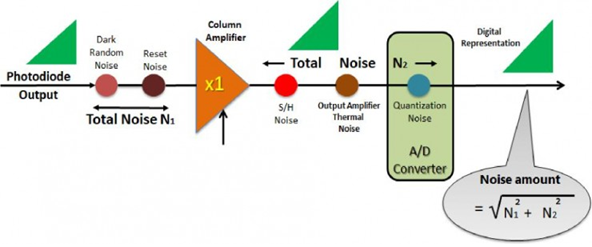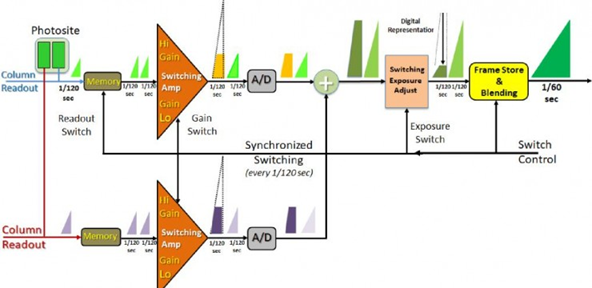Canon Inc, a Japanese multinational specializes in optical, imaging, and industrial products, such as camera lenses, DSLRs, medical equipment, optical scanners, printers, and semi-conductor manufacturing equipment.
Canon is not a company that shies away from exploring and experimenting with new-age technology. One such case in point should be the Dual Gain Output image sensor or the DGO image sensor launched with the C70 and other cinema cameras. Wondering what the new technology is all about? Let us explore the concept in finer detail.
The new technology – abbreviated DGO by Canon, was launched with the EOS C300 Mark III. The technology is relatively new and now is the time would explore the working of this technology and find how it improves your shooting experience. The technology has now been introduced on the Canon C70.
For those wondering what all the fuss about the Dual Gain Output Image sensor is, Canon has published a white paper that should help you understand the technical aspets.
The Super 35mm 4K Image Sensor ensures high-quality HDR imaging.
The Canon Cinema EOS (Cinema Electro-Optical System) autofocus digital photographic and cinematographic SLR and mirrorless switchable lens camera system was presented in late 2011 with the Canon EOS C300 and followed by the Canon EOS C500 and Canon EOS 1D C in 2012.
At the same time, the 35 mm format has been what has remained a strong option in moviemaking. Canon found the right combination of the two, and that is where the new digital cinematography lens-camera systems made an appearance.
Canon has gained years of experience in the Cinema EOS system of lenses, making them come with the new range of Dual Gain Output sensors.
The full-frame EOS C500 Mark II improved the Modularity, convertibility, and connectivity of the camera, making it one of the most unique options. The EOS C300 Mark III camera was further brought ahead of the technology.
The EOS C300 Mark III camera is almost identical to the EOS C500 Mark II. Still, it introduces the best performance with the new Super 35mm CMOS image sensor developed by Canon – the Dual Gain Output (DGO) sensor.
You would find the sensor taking ahead of the best features available on the CMOS sensors. The white paper also mentions the 15-stop dynamic range of the recent Cinema EOS cameras, which has been extended to 16 stops system in the latest EOS C300 Mark III camera.
The Dual Gain Output Sensor – An overview

Image Source: Canon
Canon introduced the first Cinema EOS camera in 2011, and the technology has grown manifold. The first Cinema camera was based on Canon-developed 4K single CMOS image sensor with a Bayer color filter array, and the camera that introduced the concept was the EOS C300.
The sensor’s design strategy focused much on High Dynamic Range (HDR) imaging. The sensor has 8-megapixel photosites utilizing two separate photodiodes designed to speed up the capture of the electrons. This effectively improves the effective dynamic range of the photosite.
The way the dual gain output sensor is achieving its 16 plus stops of total dynamic range is by reading out each photodiode.
The design of the photosites has been retained all through all the Cinema EOS cameras. This includes the 4K Super 35mm and the 5.9K full-frame systems.
The new sensor developed for the EOS C300 Mark III camera has other technology. First, you would have an extended dynamic range. You would find an analog amplifier within each of the multiple-column readout circuitries.
Since it is a narrow bandwidth amplifier, you would find it has a very negligible inherent noise. This will help enhance the electronic signal above the noise sources, and thus you get a better signal-to-noise advantage.
Canon states that the most dynamic range (16+ stops) can be accomplished when shooting at 800 ISO in Canon Log 2. If you shoot in Canon Log 3 then the dynamic range falls to 14 stops.
The DGO or Dual Gain Output sensor applies two distinct gain level settings to each photodiode signal output. This is further followed by exposure adjustment. The blend of the two signals will thus produce a final signal output with fully protected highlights, and noise enhanced lower region.
What new technologies lie under the 4K Super 35mm Image Sensor Dual Gain Output (DGO) Image Sensor?
The sensor is being deployed for an enhanced and improved new 4K cinematography camera technology. It utilizes two photodiodes that are deployed in a very strategic manner.
Each of the photodiodes can have the ability to expand the dynamic range efficiently, and the additional processing adds up to a further extension. This goes a long way in further promoting the dynamic range. This explains why the technology is called the Dual Gain Output (DGO) system.
Saturation prioritization

As seen in the case of the above image, you would find the noise sources positioned on either side of the column amplifier. The column amplifier has a very narrow bandwidth. This will ensure that it does not have any thermal noise.
As indicated in the image above, the total noise output is called Saturation prioritizing gain setting. In addition, an attempt is made on the sensor to recover the digital representation of the full dynamic range signal output from the image sensor.
Noise Prioritisation
The image above indicates the final noise output with the two sequential signal level adjustments. You would notice an elevation of the column amplifier to a high gain setting xG.
Attenuation of signal and noise follows this by a factor of xG in the digital domain. You will find that the noise sources are not amplified.
That would mean you will find that high gain elevation allows the signal to effectively “step over” the N2 noise sources. This phenomenon is termed as noise prioritizing gain setting.
How are Dual Gain Settings implemented on Each Photodiode Output?
The signals are sampled row by row in parallel column readout architectures when using the sensor. This is clearly shown in the following image.

The image would not need any further explanation. You would find that the process of dual gain is achieved through a time-multiplexed sequence.
The two signals are observed to move through the analog to digital conversion. This is done along with the exposure adjustment process. This will produce a replica of the input signal with higher signal-to-noise performance.
The final output would be the best HDR product of the Dual Gain Output (DGO) process. That way, you would find that all your highlights are detailed, but there is a considerable noise lowering.
That would mean you would get access to better HDR performance even in the darker scenes. It can also effectively minimize the visibility of those low-level readout artifacts.
The Concluding Thoughts
Canon has had a great experience in n HDR motion imaging. With that background knowledge, it has applied high-end technology by extending the exposure latitude in both regions above and below the reference 18% grey exposure.

